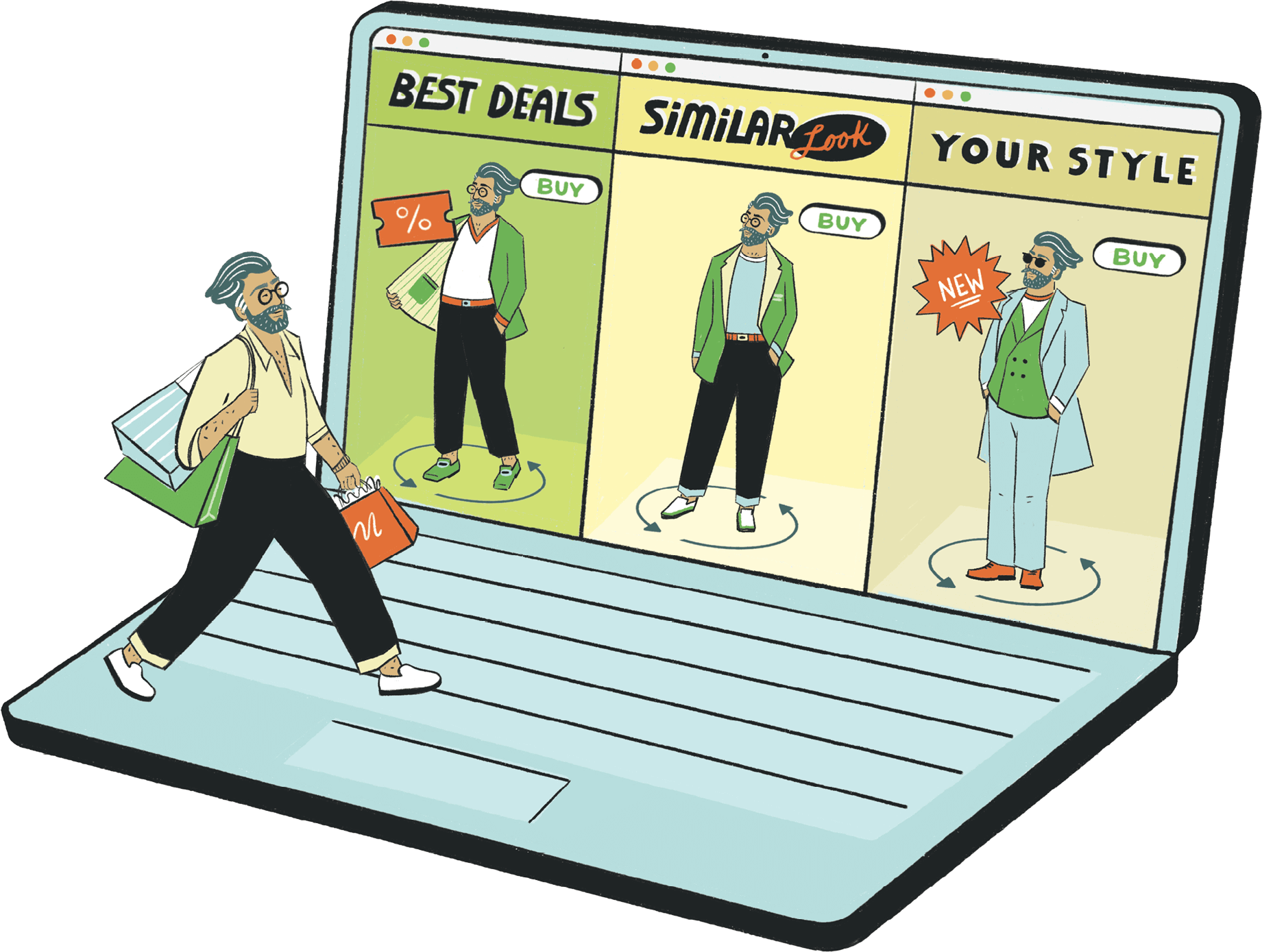Your Money
SAVING MONEY WITH AI
How to benefit from the hot new shopping technology
BY LISA LEE FREEMAN

Artificial intelligence is growing fast in retail. Most of the latest innovations are still in testing mode or operating behind the scenes, but some AI-powered shopping assistants are available right now. Think of them as souped-up search engines for finding deals, comparing models and a lot more.
AMAZON RUFUS
How to use it: Sign into your Amazon account and tap on the orange and blue Rufus icon. On the Amazon app, it’s at the bottom right corner of the screen; on the company’s website, it’s at the top left corner.
What I found: Based on my tryout—in which I asked dozens of questions about a range of products—I found the Rufus chatbot helpful in deciding what to buy. When I requested cheaper alternatives to popular high-end products, I got excellent suggestions. Rufus was also useful in comparing products; for example, it described important differences between two brands of fountain pen ink. It’s terrific at summarizing user reviews, and it can answer questions about your Amazon orders. But it’s far from perfect. When I asked for easy-to-clean coffee grinders, it listed a container of cleaning tablets.
My tips: Be as specific as possible, and keep asking more specific questions to drill down for the best information. Don’t expect it to be comprehensive, partly because it won’t show deals from other retailers.
GOOGLE SHOPPING
How to use it: Go to google.com/shopping on your computer or open the Google app on your phone and type in Google Shopping.
What I found: With its beefed-up AI features, this is a powerful tool for researching products and finding deals. But it’s also a bottomless shopping pit, hitting you with endless lists of “latest deals.” If you ask a question, you’ll get virtually infinite results and ways to filter them. You might also get a “Researched with AI” box summarizing helpful insights and linking to more product info. But Google Shopping’s most useful feature is a search bar that pops up on your screen when you click on a product (scroll past “sponsored” results). It shows detailed price information, reviews and more.
My tips: Don’t use this tool if you’re in a hurry! Be prepared for info overload—and the occasional dead end. Also, check out Google Shopping’s new AI Create & Shop tool, which generates images of garments you describe and suggests similar items. To find it, click on the top left corner of the shopping tab in the mobile app.
CHATGPT, GEMINI, PERPLEXITY
How to use them: With each of these general-purpose chatbots, simply type your questions into the search bar.
What I found: They’re all top-notch. You can get product recommendations and comparisons, track down coupons and deals, and find out things like the best time to buy an item. They offer more comprehensive qualitative info than Rufus, although Rufus can be more convenient for Amazon shoppers. When I asked for cheaper options to an Apple iPad cover, for example, Gemini simply listed products; Rufus showed not only specific models, but also prices and links.
My tips: I liked Perplexity the best because it presented product recommendations in helpful charts. But they’re all awesome, if you ask enough of the right questions. Whichever you use, I suggest using Google Shopping to double-check results and find the best deals.
Lisa Lee Freeman, a journalist specializing in shopping and saving strategies, was editor in chief of ShopSmart magazine from Consumer Reports.
ILLUSTRATION BY TARA JACOBY